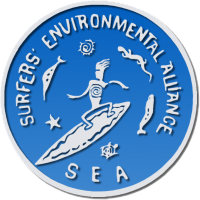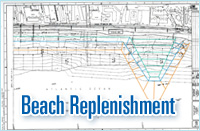The New Jersey Surf Reef enters modeling design phase at the state level. After an 18 month stall at the state level due to lack of funding and political will, the SEA NJ surf reef project is now being modeled using the wave tank at Stevens Instititute of Technology in Hoboken, NJ. In a meeting held on August 11th2008 with NJDEP, ACOE officials, and Congressman Pallone’s office, it was agreed to move the reef project into the next phase.
In August 2005, SEA issued a Request for Proposals to firms around the world for the design of an artificial wave-producing reef to be located near Seven Presidents Park in North Long Branch. The project was being funded by a $40,000 grant from the NJ Casino Reinvestment and Development Commission and is being assisted by the NJ Department of Environmental Protection. This project has the support of New Jersey’s highest officials. “Through Governor Codey’s ‘Coast 2005’ initiative, DEP is taking many actions to protect the natural resources and recreational opportunities we value at the Jersey shore,” said Department of Environmental Protection Commissioner Bradley Campbell. “We are particularly pleased to partner with the Surfers’ Environmental Alliance and the Casino Reinvestment Development Authority on this unique reef project that ensures New Jersey remains a surfing destination on the East Coast.”
Environmental Alliance, after reviewing several proposals, has selected the design firm ASR, the world leader in artificial surfing reefs. Upon completing a detailed study of the proposed construction area, ASR provided SEA with the plans for the multi-purpose reef.
ASR’s reports to date show that they have gone through the preliminary stages of examining the historical wave climate, defining the surfing wave climate, determining the model bathymetry and evaluating a series of reef designs. They have completed the numerical modeling study and have conducted design tests in their wave pool. A final design and construction plan will follow given state funding, and construction is planned for 2009-2010.
This project has the potential to drastically improve the image of shore protection in a way that has not been achieved to date, at least not here in the United States. Although the surfing/recreational component is the main focus of this project, we believe this type of structure will significantly improve the coastal protection management of a particular area and serve as a ‘dual use’ alternative to the traditional, inflexible federal plans. In addition, we think it will contribute to beach safety by making a less steep gradient where employed. Other states are already closely watching this groundbreaking project. Stay tuned!.

